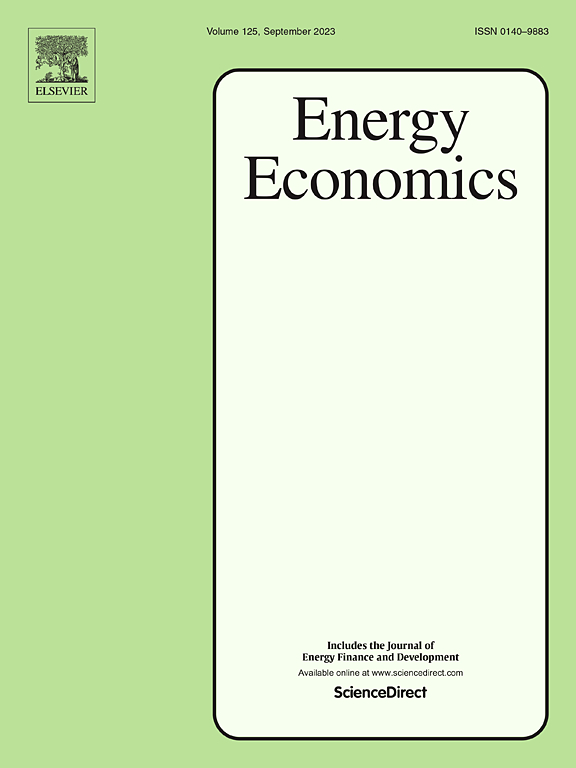对发展中国家的前期能源成本给予公平的补贴
IF 14.2
2区 经济学
Q1 ECONOMICS
引用次数: 0
摘要
我们调查了家庭对太阳能照明系统或电网连接的拟议投资补贴金额的敏感性。通过对12个发展中国家15,930个家庭的大型微观数据样本进行分析,结果表明,拥有正式的银行账户显著影响了购买太阳能照明系统或电网接入的意愿,但这种影响随着延迟付款的选择而减弱。经济拮据的家庭,例如没有正式银行账户的家庭,对太阳能照明系统的补贴不敏感,因为这种补贴可能太贵,但他们对较便宜投资的补贴很敏感。我们的互动分析显示,没有银行账户的家庭(因此受到财务状况的限制)在获得66%补贴的投资时,比那些有银行账户的家庭(在没有任何补贴的情况下获得全价报价)更有可能愿意支付。然后,我们可以计算公平的补贴金额,我们将其规范地定义为使每个家庭愿意支付前期成本的概率相等所必需的金额。例如,当没有对拥有正式银行账户的家庭提供补贴时,对没有正式银行账户的家庭的公平补贴金额约为太阳能照明系统的43%和电网连接的65%。本文章由计算机程序翻译,如有差异,请以英文原文为准。
Equitable subsidy amounts for upfront energy costs in developing countries
We investigate the sensitivity of households to subsidy amounts for proposed investments in a solar lighting system or a connection to the electricity grid. Using a large microdata sample of 15,930 households for a group of 12 developing countries, the results show that having a formal bank account significantly influences the willingness to pay for a solar lighting system or for grid access, but this effect diminishes with delayed payment options. Economically constrained households, such as those without a formal bank account, are not sensitive to subsidies for solar lighting systems, which may be too expensive, but they are sensitive to subsidies for cheaper investments. Our interaction analysis reveals that households without a bank account (and thus constrained by financial conditions) who are offered an investment with a 66 % subsidy are more likely to be willing to pay than are those households with a bank account and who receive a full price offer without any subsidies. We can then calculate equitable subsidy amounts, which we normatively define as the amounts necessary to give each household an equal probability of being willing to pay the upfront cost. For example, when there are no subsidies for households with a formal bank account, equitable subsidy amounts for households without a formal bank account are approximately 43 % for a solar lighting system and 65 % for a grid connection.
求助全文
通过发布文献求助,成功后即可免费获取论文全文。
去求助
来源期刊

Energy Economics
ECONOMICS-
CiteScore
18.60
自引率
12.50%
发文量
524
期刊介绍:
Energy Economics is a field journal that focuses on energy economics and energy finance. It covers various themes including the exploitation, conversion, and use of energy, markets for energy commodities and derivatives, regulation and taxation, forecasting, environment and climate, international trade, development, and monetary policy. The journal welcomes contributions that utilize diverse methods such as experiments, surveys, econometrics, decomposition, simulation models, equilibrium models, optimization models, and analytical models. It publishes a combination of papers employing different methods to explore a wide range of topics. The journal's replication policy encourages the submission of replication studies, wherein researchers reproduce and extend the key results of original studies while explaining any differences. Energy Economics is indexed and abstracted in several databases including Environmental Abstracts, Fuel and Energy Abstracts, Social Sciences Citation Index, GEOBASE, Social & Behavioral Sciences, Journal of Economic Literature, INSPEC, and more.
 求助内容:
求助内容: 应助结果提醒方式:
应助结果提醒方式:


